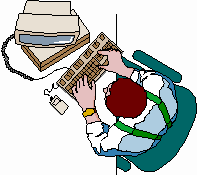|
|
||||||||||||||||||
|
TENS TIPS Newsletter |
||||||||||||||||||
| Committed to Cost Containment for the Insurance Industry | ||||||||||||||||||
|
Carpal Tunnel Syndrome |
||||||||||||||||||
|
Carpal Tunnel Syndrome is a condition causing weakness and pain in the wrist and hand. Carpal Tunnel Syndrome occurs when pressure is applied to the median nerve located in the wrist. This nerve carries signals between the hand and the brain. The median nerve and many tendons are surrounded by the wrist (carpal) bones and other tissues which create a "tunnel." Some of the symptoms of Carpal Tunnel Syndrome may include tingling, pain, weakness and numbness in the fingers and/or the entire hand and a feeling that fingers are swollen. A shooting pain up the arm may also occur. These symptoms become worse in the evenings. Hands may tend to be weaker in the mornings, causing difficulty with routine activities, such as buttoning a shirt or blouse. Carpal Tunnel Syndrome can be caused by any motion causing repeated pressure to the median nerve. Activities and hobbies often require a gripping motion or keeping your wrist bent for long periods of time. Some examples are typing, needlework or knitting, playing tennis or golf and holding a book. Injuries to the wrist may cause pinching of the median nerve. Arthritis related diseases like gout and rheumatoid arthritis can also cause Carpal Tunnel Syndrome. Other causes include pregnancy, diabetes, and thyroid diseases. |
|
Once a person is diagnosed with the condition, the next step is to start treatment. Splints can be used to reduce swelling. The splints are used at night to keep the wrist straightened during sleep. Sometimes injections of corticosteroids are given into the wrist. These injections reduce swelling to release the pressure on the median nerve, and bring relief. A doctor can also prescribe anti-inflammatory medications for relief of the pain associated with Carpal Tunnel Syndrome. If splints and medicine do not help the condition, surgery is also an option. The process is called Carpal Tunnel Release. This is a simple operation, done without a stay in the hospital, and can restore full use of the hand in about six weeks.
|
|
To help prevent Carpal Tunnel Syndrome, alternate your work to reduce pressure on your wrist. Also, plan to take rest breaks for your hands and wrists, or delegate tasks which irritate the condition. It may even be necessary to eliminate activities which cause too much pain and pressure. In many cases, Electromedical devices are prescribed to aid in the reduction of pain and swelling related to Carpal Tunnel Syndrome. Should you need to supply a patient with any such device, or if you have questions about which Electromedical device is right for your patient, call CPR Medical at 1-800-235-5675. Our staff will be glad to assist you in making the right choice, as well as provide you with a cost comparison.
|
||||||||||||||
|
|
||||||||||||||||||

